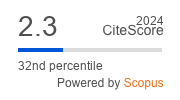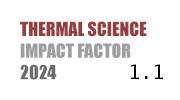THERMAL SCIENCE
International Scientific Journal
EXERGY ANALYSIS AND MACHINE LEARNING FOR ENHANCED EAF STEEL RECYCLING
ABSTRACT
This study relies on exergy principles to analyze the sustainability of the steel recycling process in electric arc furnaces. Focusing on a balance between material and energy efficiencies, the research addresses the degradation of elements such as manganese and silicon from steel to slag phase. Machine learning techniques were employed to predict and optimize element distribution coefficients. By leveraging HSC v.9 software, a detailed exergy analysis was performed, utilizing precise coefficients for element distribution in steel and slag, with energy consumption. The results demonstrate the potential of integrating exergy analysis and ma-chine learning to enhance the sustainability of steel production, aligning with circular economy principles.
KEYWORDS
PAPER SUBMITTED: 2024-06-07
PAPER REVISED: 2024-09-09
PAPER ACCEPTED: 2024-10-24
PUBLISHED ONLINE: 2024-12-07
THERMAL SCIENCE YEAR
2025, VOLUME
29, ISSUE
Issue 3, PAGES [2167 - 2183]
- Manojlović, V., et al., Machine Learning Analysis of Electric Arc Furnace Process for the Evaluation of Energy Efficiency Parameters, Applied Energy, 307 (2022), 118209
- Graedel, T. E., et al., Alloy Information Helps Prioritize Material Criticality Lists, Nature Communications, 13 (2022), 1, 150
- Reuter A. M., et al., Challenges of the Circular Economy: A Material, Metallurgical, and Product Design Perspective, Annual Review of Materials Research, 49 (2019), 1, pp. 253-274
- Antoinette, S., et al., Recycling Indices Visualizing the Performance of the Circular Economy, World of Metallurgy-Erzmetall, 69 (2016), 4, pp. 201-216
- Bhavik, B., et al., Thermodynamics and the Destruction of Resources, Cambridge University Press, Cambridge, UK, 2011
- Camdali, U., et al., Analysis of an Electric Arc Furnace Used for Casting of Steel: An Exergy Approach, Metallurgist, 64 (2020), Sept., pp. 483-495
- Hajidavalloo, et al., Exergy and Energy Analysis of an AC Steel Electric Arc Furnace Under Actual Conditions, International Journal of Exergy, 12 (2013), 3, pp. 380-404
- Hemal, C., et al., Exergetic Sustainability Analysis of Industrial Furnace: A Case Study, Environmental Science and Pollution Research, 28 (2021), 10, pp. 12881-12888
- Roine, A., Lamberg, P., HSC Chemistry, v9., Outotec Pori (2020), www.hsc-chemistry.com/
- Manojlović, V., et al., Technical Solution: Development and Application of the XRF Method Enhanced with Machine Learning Techniques for the Determination of Slag Composition in the Steel Industry, Belgrade, Serbia, 2024
- Zhang, R., Jian, Y., State of the Art in Applications of Machine Learning in Steelmaking Process Modeling, International Journal of Minerals, Metallurgy and Materials, 30 (2023), 11, pp. 2055-2075
- Zhang, S., et al., Predictive Modeling of the Hot Metal Sulfur Content in a Blast Furnace Based on Machine Learning, Metals, 13 (2023), 2, 288
- Forootan, M. M., et al., Machine Learning and Deep Learning in Energy Systems: A Review, Sustainability, 14 (2022), 8, 4832

